Yves Tessier strives for light in the total absence of shadows in his work. Does it evoke an idea about antiquity or an ancient civilization? Could it be a still from your own life with a mod-twist to it? His apparently simplistic use of line and color depicts figures in everyday settings. This, he says, represents a direct way to view the world. In the following interview, Tessier explains what his painting means to him and where it is going to take him in the future. He is truly mesmerized by everything to do with Homo Sapiens, and looks to the streets, online, vintage magazines and film as his main source for subjects and motifs. Process and progress are key to him, which he explains in his systematic approach to studio time. And not only systematic, but energetic and thoughtful. You can tell he has taught himself to excel in this way through trial and error, and as his career has progressed, he has only improved upon that craft further to produce the vibrant and engaging work we see today.
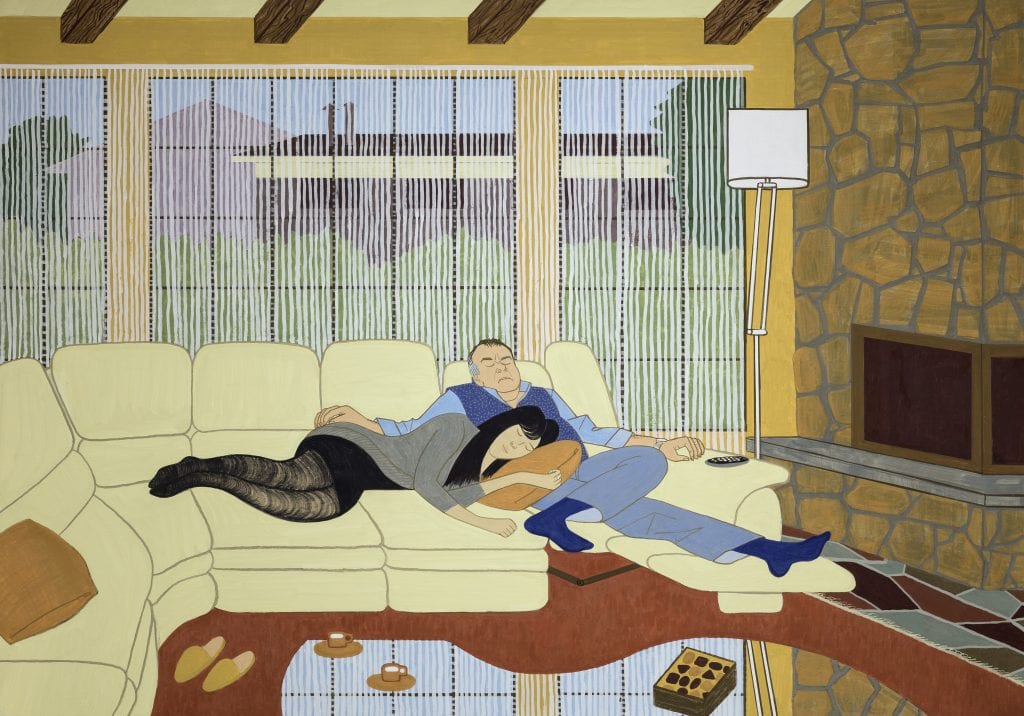
Sleeping Couple Watching TV, 2012. Courtesy of the artist.
What is your favorite color?
The color of all skins.
Tell us a little bit about yourself. Where are you from originally and when did art first enter your life?
I was born and grew up in Laval, a suburb of Montreal, in a family of 5. We lived in an uncanny looking bungalow with a flat roof and no garage but a carport.
At four or five years old, every Saturday morning, I watched American cartoons on TV. In the opening credits, the Road Runner would freeze frame in mid stride for 2 seconds. I started to draw but …it was on the run again. That’s when it all began for me. Like the Coyote I really wanted to capture that bird…I waited ‘till the next Saturday for the freeze to further my drawing… I painted our bungalow from memory in 2008.
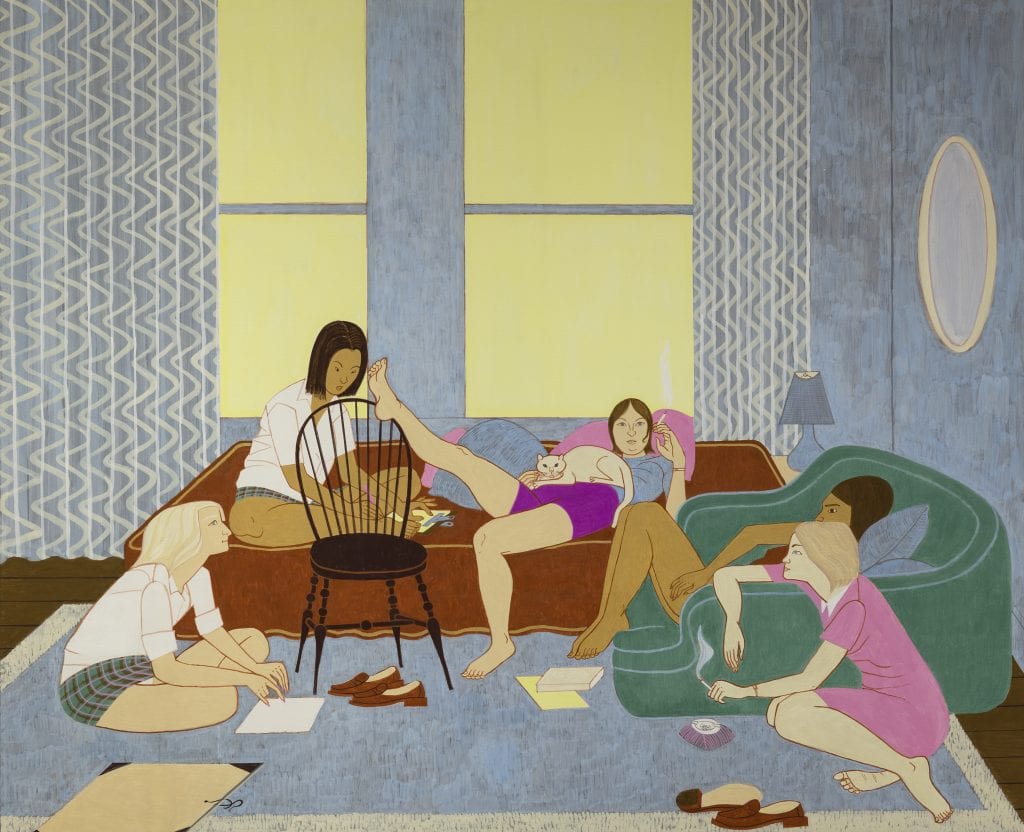
Girls on Campus, 2012. Courtesy of the artist.
What is your preferred medium and how did that preference come about?
Casein Glue, it was in use during antiquity. It’s the perfect medium to build up thin, quick drying, layers giving color a dry richness similar to fresco. It also has an amazing fluidity for lines. I discovered this ancient process while working as an assistant to an art restorer of churches and convents in Québec.
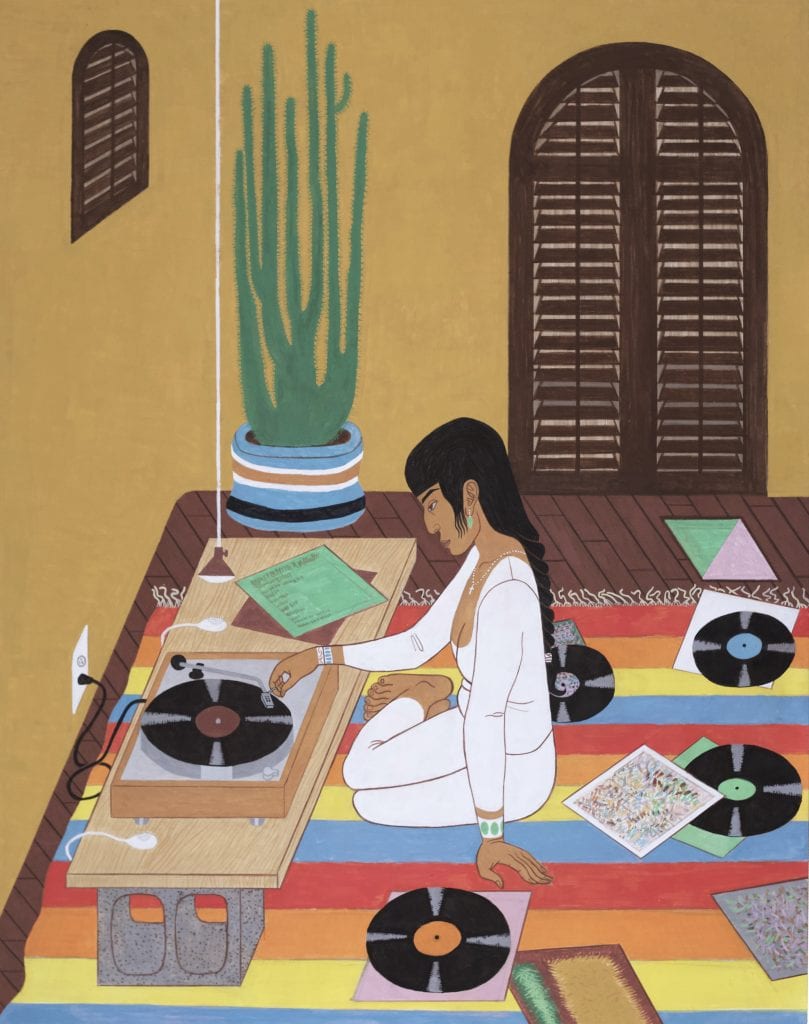
Vinyl Music*, 2019. Courtesy of the artist.
Has your work always taken on the style it currently embodies?
In art school I learned how to paint still life in oil, in the style of Chardin’s realism. This was back to back followed by large abstractions (1976-77) with layers and layers in oil paint and using paint remover in the process. Then I painted people of my entourage who came in sat in my studio for their portraits. Next was a period of fauvism where I got me stuck… Soon after, I began to notice that painters from early antiquity and other civilizations worked in a bold style with such simplicity of line, color and with total absence of shadows. That’s when I decided to take this direction: line + color – shadow = cool. I knew that this simple formal restriction was to keep my in tune for some time.
Moving back and forth between Montreal and New York since 2001, how does the art scene here differ from there?
There are many more collectors in New York.
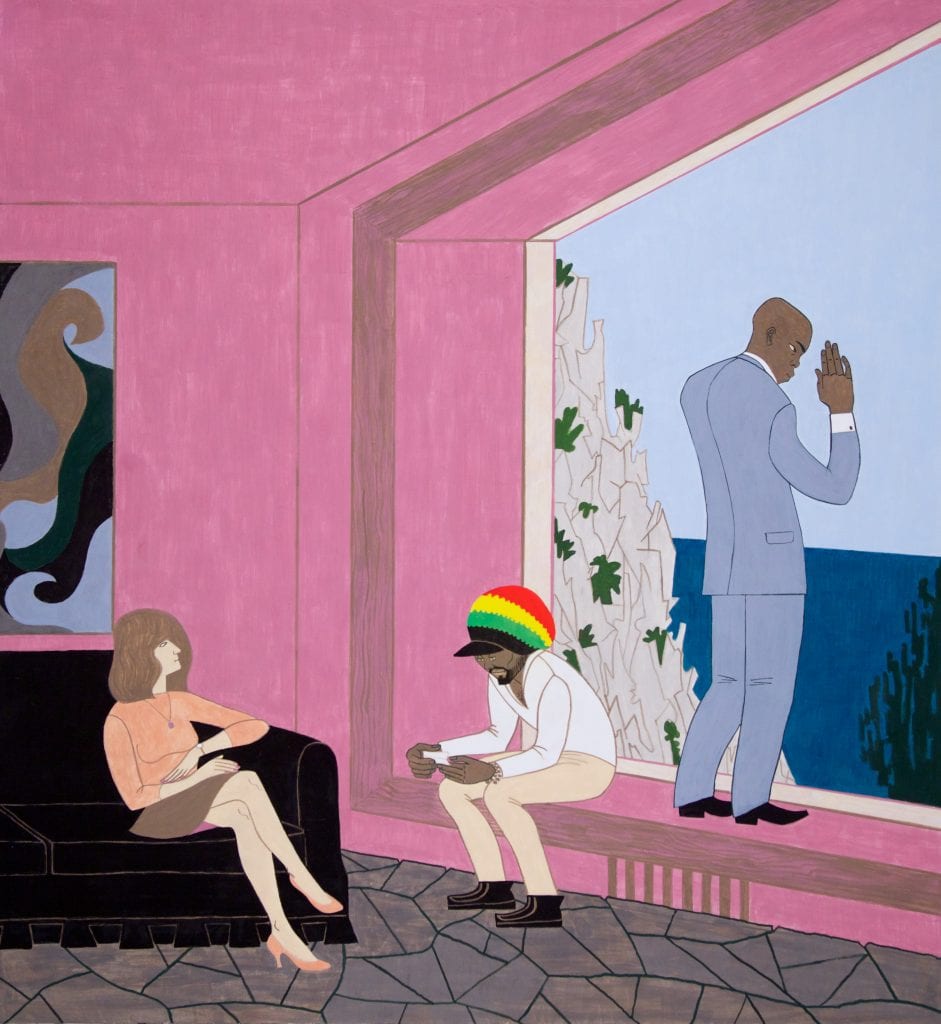
Interior in Capri, 2016. Courtesy of the artist.
What is your process? How do you begin a work?
1. The cycle begins on the blackboard with white chalk and a wet sponge. That’s where I work out a composition while looking at some source material.
2. This composition is then transferred to an aluminum panel of matching dimensions, this with tracing paper.
3. This transfers leaves a faint graphite line on the surface already coated in gesso (white marble dust with casein glue binder).
4. The faint lines are then gone over with greyish-omber paint to make the composition lines bolder.
5. Then I begin to make paint by mixing glue with pigments and improvise my color choices as I go along.
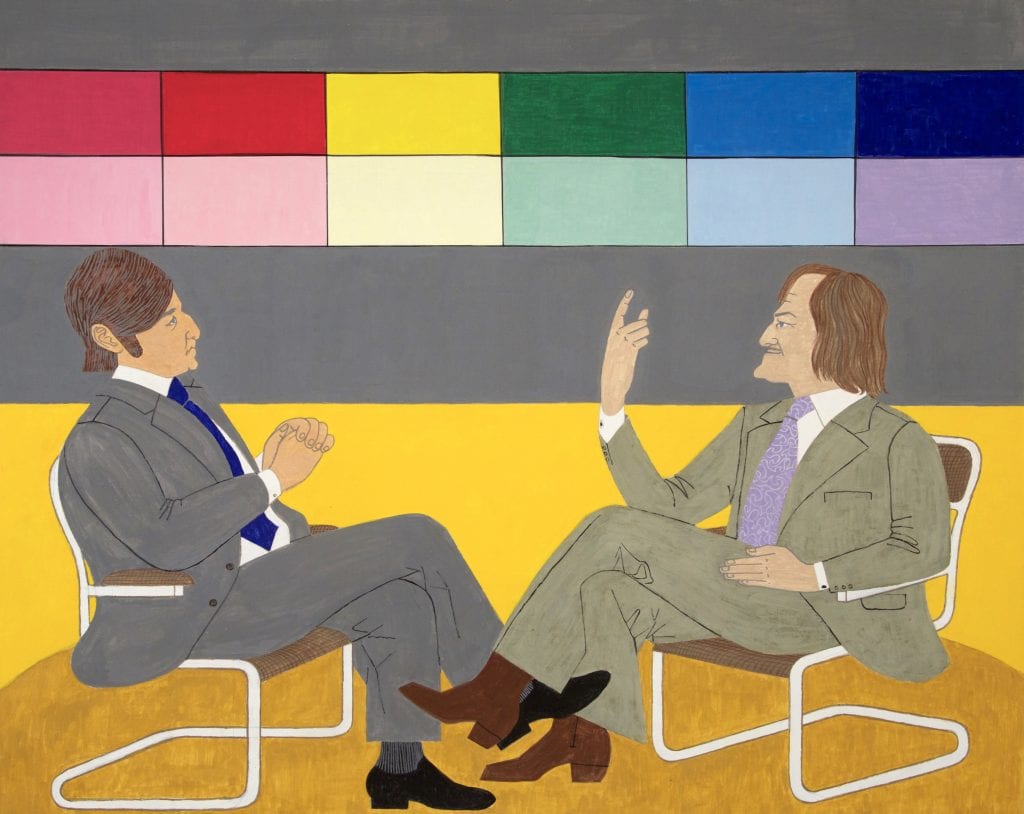
Talk Show II, 2018. Courtesy of the artist.
What source material do you base your work off of now?
Like it is for a movie in pre-production, I’m out scouting for interesting characters, interiors/exterior locations, scenery, costumes and other props…l keep an eye open for especially body postures and body language. I find what I need through many venues such as postcards, stamps collections, library books, family albums, porn & fashion magazines, my own photos, screen shots from the internet and occasional life model sessions. A drawing I did forty years ago could do even. I make photocopies of all these and sift through them often. And then I select those I want to translate into small pencil studies. It’s important for me to explain that I do not trace over any photographic images. This is to avoid the kind of drawings that show signs of photographic contamination. So, I look at a photo for as long as I can then turn it upside down. From there I produce a sketchy drawing from memory…. I turn the photo right side up, compare (get horrified at how far off I went), erase and adjust, repeat and so on until I have a solid drawing…
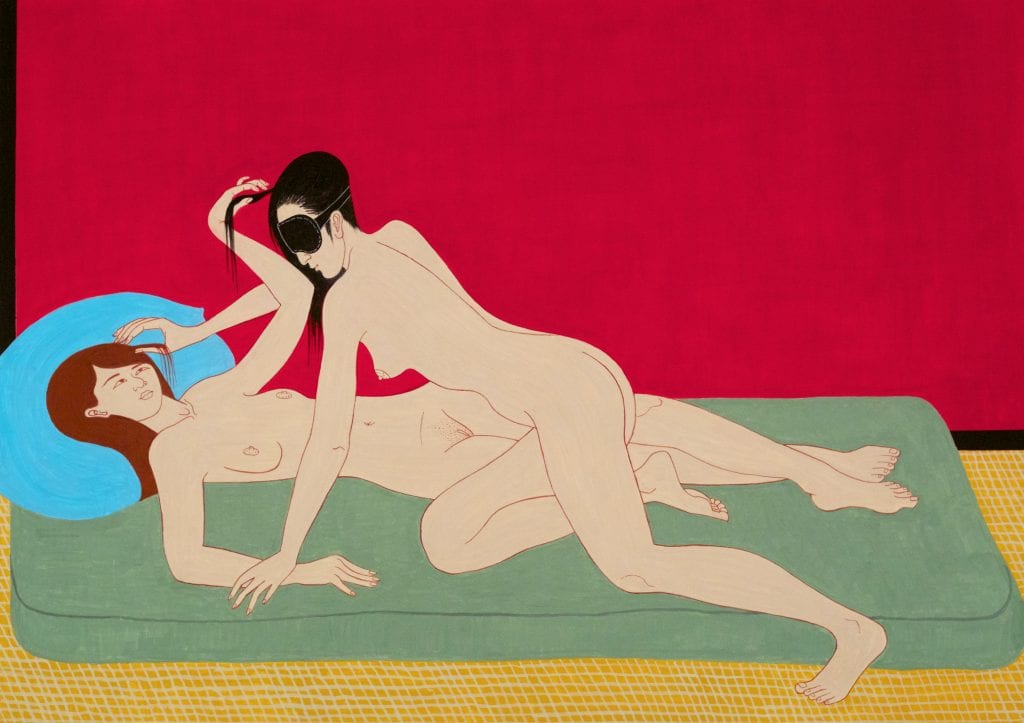
Le Mask, 2016. Courtesy of the artist.
You worked in sculpture for a while. How did you make the transition into painting?
This was 1994, a 7 year period began when I worked mostly on portraits polychrome busts commissions, done in terra cotta and painted in casein. I also did 2 full scale standing statues. By the spring of 2001, I decided to go pictoral again and re-visit the line + color minus shadow = cool. So I started on a series of paintings done in casein on mini wood panels and called it “Situations.” I’m still adding to this corpus of work, and scale has increased gradually since the move to my studio in Harlem. The main reason for making the transition was because I’m fascinated with the flatness of a picture plane. Anything you paint unto its surface is a projection of the object sharing the same plane as everything else, and that brings in more complexity.
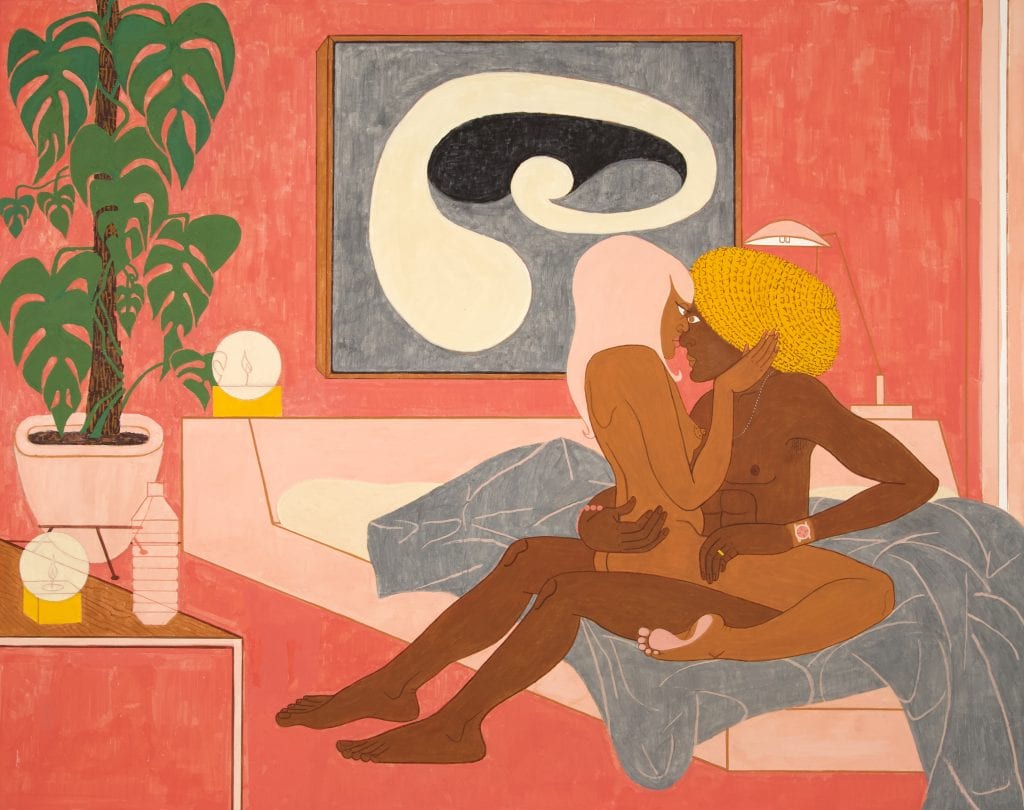
Eye Contact, 2019. Courtesy of the artist.
Does your work reference any Art Historical movements?
Referencing, I’m not sure. But to plunder and assimilate all I can digest from the past and combine that with today’s situations?…That I can do! Someone once said that I render all these historical movements seamlessly. What a relief to hear!
You seem to have a great relationship with your gallery, how has that relationship changed over the years?
We’re still good!
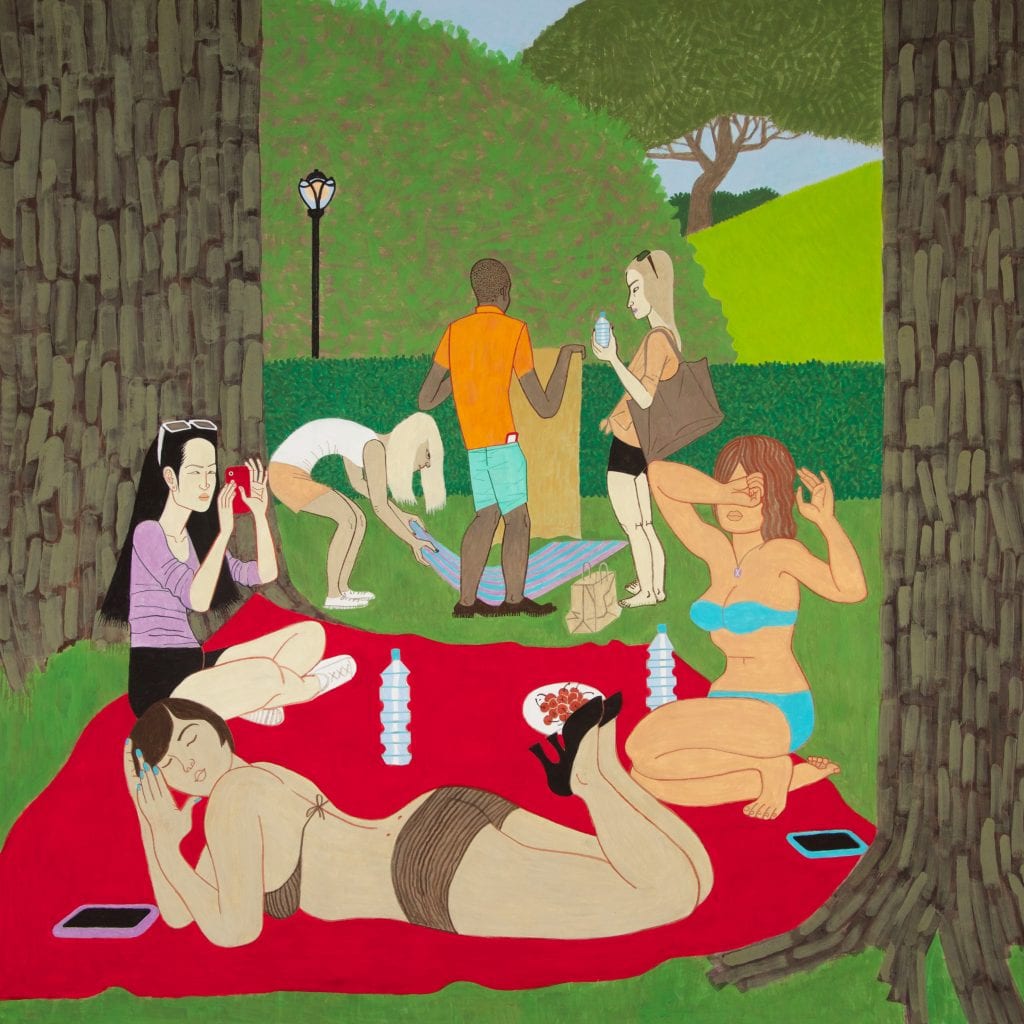
Cherry Picnic, 2018. Courtesy of the artist.
At the end of every interview, we like to ask the artist to recommend a friend whose work you love for us to interview next. Who would you suggest?